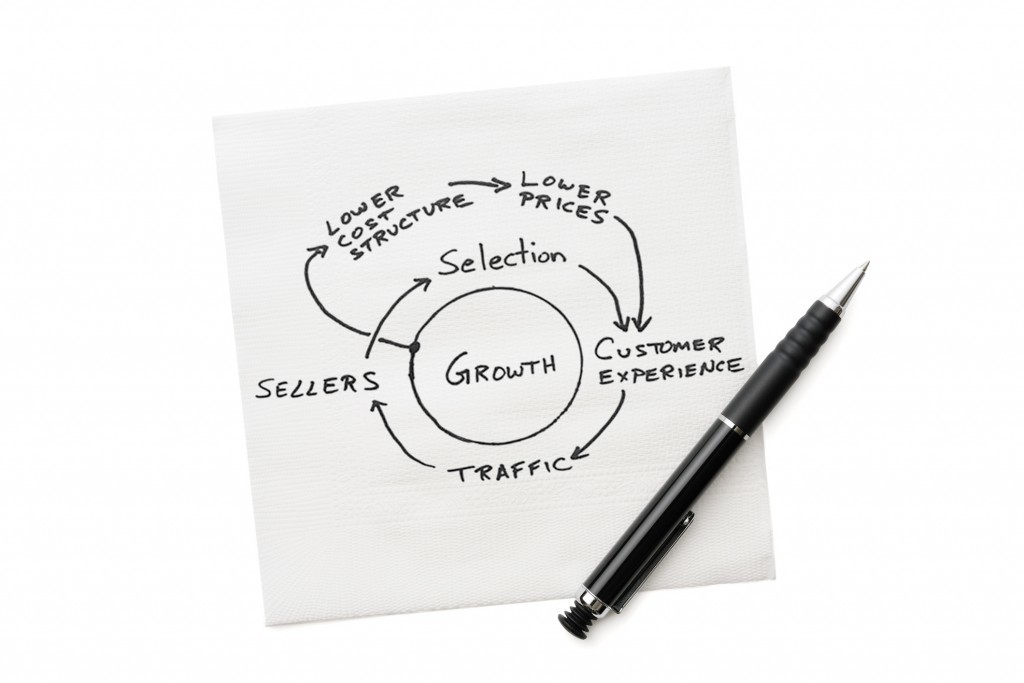Technology Leverage

The Gist of This Mission
In the mid-1880s, Paul Morphy changed the current thinking about chess which focused on finding good combinations of moves, and instead pointed out that it was good positions that lead to good combinations. Because of his brilliance and insight, he is considered the first modern chess player.
Having observed the way that software is used in business over the past 35 years, I too believe that there are patterns and principles to successful use of software. In my view, the idea of technology leverage is analogous to Morphy idea of position. The fundamental insight behind technology leverage comes from Ray Kurzweil. Kurzweil, although he doesn’t use the term, explains the idea in his analysis of why technology advances at an exponential rate.
By studying how technology leverage is created, we can envision how to make enterprise software more successful. This research mission seeks to understand technology leverage and shows how to put the concept to work.
The Benefits of Technology Leverage
With the right strategy for technology leverage, companies create a positive cycle, where investments lead to:

Every dollar spent increases business value |

Resources devoted to innovation expand |

Friction is reduced, accelerating change |

Technical debt decreases |

Value of existing investments is amplified |
The Mission
Why does enterprise technology succeed? When does it hit a homerun and when does it strike out? The concept of technology leverage answers these questions. By understanding how leverage works, how it is created, and how it evolves, companies can make better decisions about acquiring, deploying, and using technology.
Here’s why. All over the world, CEOs and other members of senior management are asking the same question: How can each dollar of technology spend make us more powerful? The hope is that new technology can power digital transformation and create new ways to please customers. When this is achieved, companies experience technology leverage.
Technology leverage is the ability to create increasing value with a stable or shrinking amount of resources, while at the same time increasing the ability to evolve at a faster rate. But for this to happen, a strategy for creating technology leverage must be in place. When a strategy for leverage is in place and working well, waves of technology spend are transformational.
Unfortunately, few companies have a well articulated and clear strategy for technology leverage. As a result, new technology spend adds power, but it also adds burdens and doesn’t make evolving forward faster or easier. This creates the unfortunate phenomenon of increasing technical debt, which reveals itself in budgets dedicated primarily to maintaining existing technology investments instead of promoting innovation.
The path to increasing technology leverage is clear but not easy. The mission of this research is to identify ways that companies can create and sustain technology leverage as they expand their spend through a guided strategy. This strategy is likely to be most successful when it targets a few key domains within a business that are ripest for transformation, rather than the enterprise writ large.
This research mission examines the concept of technology leverage and how companies can design strategies to create and grow leverage.
What is technology leverage?
American technologist and author, Ray Kurzweil, offers a key insight about how to create technology leverage in his analysis of the exponential progress of most technology development. The Kurzweil Curve, shown below, asserts that most technology develops at an exponential pace. Kurzweil believes that when you create low-level services, higher level services can be built on top that have more power and are better fit to the purpose than they would be otherwise. This cycle repeats itself, with more and more powerful services standing on the shoulders of those that have come before. Having better foundational building blocks empowers exponential progress.

Kurzweil makes two key observations about this exponential growth process. First, he points out that as the technology services evolve, they fit the tasks at hand much better. Second, as the results of using better technology are demonstrated, more resources are applied to them, providing a new force that drives growth.
In the case of most businesses, a foundation of services and data has been created as enterprise applications such as CRM, ERP, SCM, and others have been implemented. Almost all of these applications have APIs.
The leverage comes from creating a portfolio of services that bring together just the needed capabilities to support applications that power a business. In the past, many services were narrowly scoped, and usually focused on only one part of the value chain. Data siloes would result, with some customer information in ERP, some in CRM, and still more in other systems. Significant work has been done to create a unified view in data warehouses, but these forms of data unification are not adequate to support modern applications.
To transcend the silos, companies must bring together all information related to a particular entity such as a customer or product from across the value chain. These building blocks can be data objects that have code attached to them to provide information, change information, provide analytics, or take action. Over time, these building blocks are then used to create higher level models of equipment, processes, or systems of equipment, or other important entities in the value chain.
How can companies create leverage?
At its foundation, technology leverage is the ability for companies to gain increasing value from their technology investments at a faster rate, while also making their spend more efficient and cost-effective.
When done correctly, each dollar of additional technology spend expands business value by:
- Increasing the amount of money allocated to innovation.
- Decreasing the cost of change.
- Accelerating the speed of change.
- Reducing technical debt.
- Improving the value of existing investments.
There are six main types of leverage companies can create when they have a strategy that optimizes their technology spend. These are:
- Information leverage: Using sensors and IoT technology to inexpensively increase the amount of data you’re collecting.
- Network leverage: Using large groups of people or networks to increase information sharing and spread value.
- Technology services leverage: Building more powerful high level services based on the the wider array of lower level services now available.
- Integration leverage: Using advanced techniques to simplify the integration of components working together.
- Coding leverage: Building applications based on models and abstractions, which improve flexibility and scalability, while reducing the cost of change.
- Analytics leverage: Providing analysts with the ability to separate signal from noise, by using better data analytics techniques that can ultimately result in the creation of a portfolio of analytics.
It is important to note that we don’t view these types of leverage as set in stone or as some sort of canonical definitions. Rather, these are the sorts of leverage that seem to appear over and over in enterprise software. This perspective means we are open to new ways of explaining leverage and hearing about new forms of leverage that you may have run across.
A Detailed Tour Through the Sources of Technology Leverage
If you take a close look at the way that the technology stacks of Amazon, Google, Facebook, Netflix and other powerhouse companies have developed, you will find lots of purpose-built components. Technology innovations such as Google’s Big Table, Amazon’s Dynamo DB, Facebook’s Cassandra, and Netflix’s Chaos Monkey all supported unique needs of tech stacks that were built to support each company’s business.
In the rest of business, we don’t need purpose-built components to create leverage. The problems fall into several patterns that can be supported using a reusable technology platform. Here are key sources of technology leverage that apply to a large number of businesses.
Information Leverage: Everything Will Be Sensored
Expanding the scope of information doesn’t create leverage. In fact, expanding the amount of data can actually become a problem as it becomes hard to find the best data to answer a question.
Information leverage is created when the following capabilities are in place:
- The available data relevant to an issue can be quickly located.
- Users have assistance in examining the nature of a data set to determine its quality and what signals it may provide.
- It is possible to create models of data that derive an authoritative object from multiple sources.
- It is possible to collect and organize data from a large network of sensors.
- It is possible to combine both big data sources and other transactional and metadata into high resolution models of a business process or other important activity.
- It is possible to provide applications with access to data streams.
- It is as easy as possible to create all these artifacts, and there are accessible to as many users as possible.
Information leverage means that more data actually creates more value to the business.
Integration and Information Leverage: Applying Intelligence When Connecting Everything
The work of connecting everything together often eats up a huge percentage of the work done to create an application. Such integration work comes in many forms, including normalizing data from different sources, translating data provided by one service into a form used by another, and creating new services to reach out to services or data not yet included in the platform.
Integration leverage results when it is possible to:
- Simplify the task of extracting data from a source, transform it, and deliver it where it is needed.
- Use analytics to automate the process of understanding a data set and the signal it can provide.
- Use analytics to automate and support the categorization of data according to taxonomies.
- Provide configurable end-to-end data pipelines that productize integration for certain common use cases.
Integration leverage is crucial to reducing technical debt and supporting the ability to evolve systems rapidly and implement new systems quickly.
Network Leverage: Harnessing the Power of Networks
Metcalfe’s law states that the value of a network is the square of the number of nodes in the network. Robert Metcalfe originally asserted this law with respect to networks running the Ethernet protocol, but it has since been widely applied to many networks.
In the modern world, most businesses are networks in that products and services are created by value chains that run across company boundaries. When we look at most successful Internet companies we can see that many of them create business leverage through network effects — whether human or asset based.
With respect to technology leverage, the network effect can have a dramatic impact in the following ways:
- Each individual node in an IoT network can supply information to a central repository, and also take advantage of the learning that occurs when the information is analyzed in toto. The larger the number of sensors, the more that can be learned.
- A large amount of IoT sensors can provide information that was never before available, often with granularity that may provide an ultra high-resolution view of the business. The more sensors, the more value.
Information and analytics leverage can play a key role in unlocking the leverage created by network effects.
Technology Services Leverage: Creating the Building Blocks of Leverage
The Kurzweil Curve asserts that most technology develops at an exponential pace.
In my view, the engine of exponential progress is lower-level services, like microservices, that were initially created to perform various tasks. When combined with higher-level services, these lower-level services are more powerful. Combining services in this way can continue, with each layer of adding leverage.
Kurzweil makes two key observations about this exponential growth process. First, he points out that as the technology services evolve, they fit the tasks at hand much better. Second, as the results of using better technology are demonstrated, more resources are applied them, providing a new force that drives growth.
In the case of most businesses, a foundation of services and data has been created as enterprise applications such as CRM, ERP, SCM, and others have been implemented. Almost all of these applications have APIs.
Technology services leverage comes from the ability to:
- Create a common way to provide normalized access to services from multiple applications.
- Search a catalog of available services.
- Construct higher level services based on the existing portfolio of services.
- Create abstract definitions of key components like databases so that many different vendors products can be used for implementation.
- Gain access to data from all of the underlying applications.
- Make creating services a simpler process based on modeling and guided UIs that enable many more people to participate in using and creating services.
The leverage comes from creating a portfolio of services that bring together just the needed capabilities to support applications. In the past, many services were narrowly scoped, and usually focused on only one part of the value chain. Data silos would result from this, with some customer information in ERP, some in CRM, and still more in other systems.
To create business leverage and transcend the silos, companies must bring together all information related to a particular entity such as a customer or product from across the value chain. These building blocks can be data objects that have code attached to them to provide information, change information, provide analytics, or take action. Over time, these building blocks are then used to create higher level models of equipment, processes, or systems of equipment, or other important entities in the value chain.
Development Leverage: Unlocking Sticky Knowledge
Development leverage is about combining many different types of components to create an application that can be deployed.
Development leverage is created when it is possible for business analysts, developers, and data scientists to:
- Assemble applications from a variety of existing components for data, analytics, and other services glued together using low-code techniques.
- Access a portfolio of applications created by others.
- Use a guided process to create applications from templates.
- Rapidly co-develop applications.
When development leverage is created, it is possible for users to create exactly the applications they need to do their jobs without having to first describe requirements to others who will create the application. This process of self-service has been proven to be a catalyst for innovation and improves the quality of applications.
Analytics, Machine Learning, and AI Leverage: Guidance for the Development Process
One of the most important ways to take enterprise software to the next level is by using artificial intelligence and data science. Machine learning and AI leverage is using the ever-increasing power of deep machine learning and AI to create more effective applications and products.
The amount of data available now outstrips the ability of analysts understand it and find the signal without advanced data science methods or AI tools such as machine learning. AI also plays a role in finding the structure and relationships between many large data sets.
In many domains, data can be used to create predictive models that show correlations and identify key events before they occur. This can play a vital role in driving processes like predictive maintenance that generate massive savings. Making these discoveries is the first step in creating high-level services that generate business value.
Machine learning and AI leverage should allow businesses to:
- Better predict the behavior of their customers and the performance of their products and equipment, based on the ability of the machine learning insights.
- Use AI to accelerate the data analytics process to gain insights faster.
- Augment human knowledge and expertise to empower more data-driven decisions in real-time.
- Gain assistance in understanding the nature of a dataset and the type of signals it may provide.
- Use a guided process to configure end-to-end analytics pipelines.
- Use a guided process to create predictive models based on machine learning.
- Present analytics in dashboards that are configurable and support interactive exploration.
Analytics leverage helps both beginners get started and advanced practitioners become more productive.
Creating a Platform for Technology Leverage
The way that technology leverage supports business leverage differs in every company. Perhaps the most famous modern day example of business leverage is Jeff Bezos napkin sketch, which explains the way that Amazon.com creates business leverage:
https://stratechery.com/2015/the-aws-ipo/
 Jeff Bezos’ napkin sketch illustrates how Amazon creates leverage
Jeff Bezos’ napkin sketch illustrates how Amazon creates leverage
In the Amazon model, a great customer experience and low prices lead to more traffic which attracts more sellers which increases selection and then attracts more customers and so on. The lower the cost structure, the lower prices can be, providing more benefits and attracting more customers. Layers of technology that support this structure include Amazon Web Services and Amazon Robotics. It all creates a platform to support the business that is both powerful and built to evolve rapidly.
Research Themes and Questions
Over time, achieving some or all of these types of leverage from your technological investments is possible if a company has a strategy that delineates how each new technology will bolster the business and fits into the organization’s larger technology goals.
Successful strategies will be crafted to the specific circumstances of a company, but there are several themes that are occurring over and over in products that are coming to market. These are:
- Low code development: A variety of platforms offer various ways to simplify coding using model driven methods or simplified coding done on top of a portfolio of services focused on an application domain. Low code methods create leverage by enabling a larger number and a wider variety of users and analysts to build their own applications.
- Self-service data integration: A variety of platforms have recognized that the landscape of data has grown so fast that previous, highly intermediated forms of cleaning and integrating data no longer work. A much larger group of people must be able to participate in making data useful. A new generation of products is attacking this problem using many different strategies to create the needed leverage.
- Data fabrics: With the rise of web apps that have many instances of servers handling traffic and the subsequent rise of microservices and containers, much pressure has been put on databases to meet new sets of needs. New types of databases including NoSQL databases such as document stores, key-value stores, graph databases, and columnar databases, have emerged to support the myriad needs of particular applications. Streaming is also hugely powerful. Applications also need a unified search. Instead of having developers know how to interact with each of these platforms or sources, data fabrics serve as an integration point for advanced services and for data.
Research Questions
- How can we bring the different forms of technology leverage to life with examples?
- When do products that implement the themes just outlined work well? When do they fail? What are the keys to success?
- What are the infrastructure and architectural implications of technology leverage?
- How can past victories of enterprise software be explained in terms of technology leverage?
- Can we define a methodical program to increase technology leverage?






